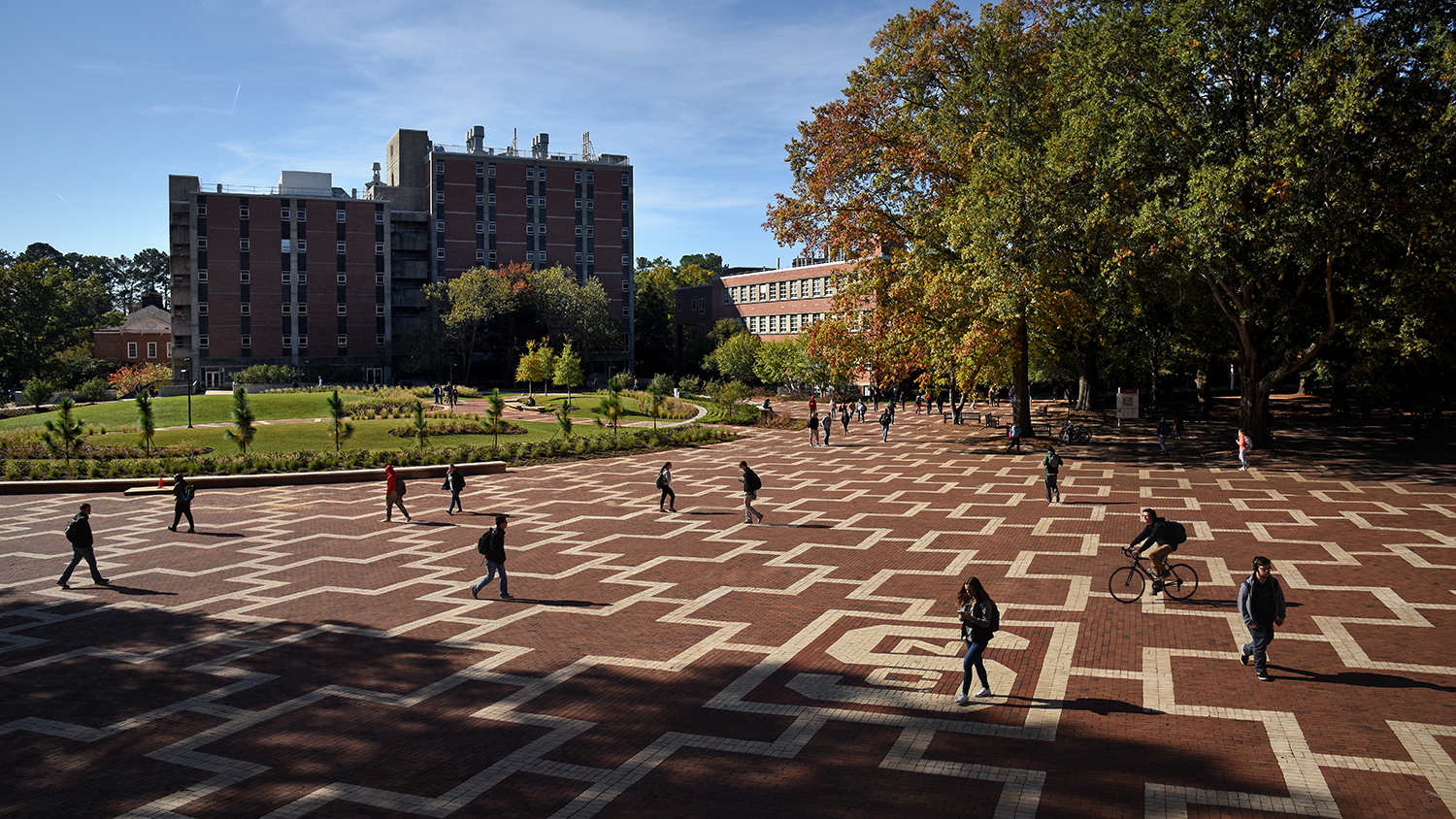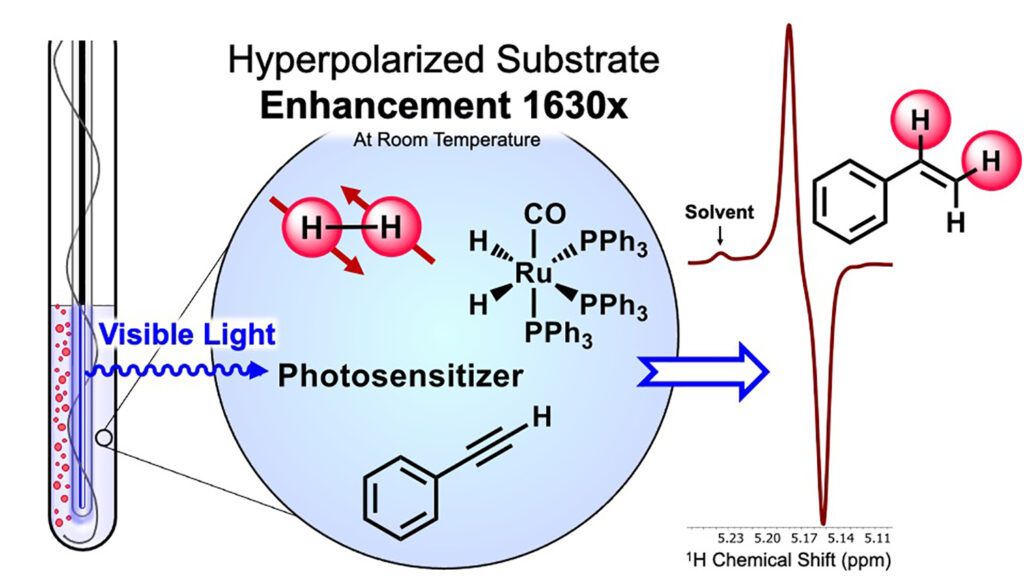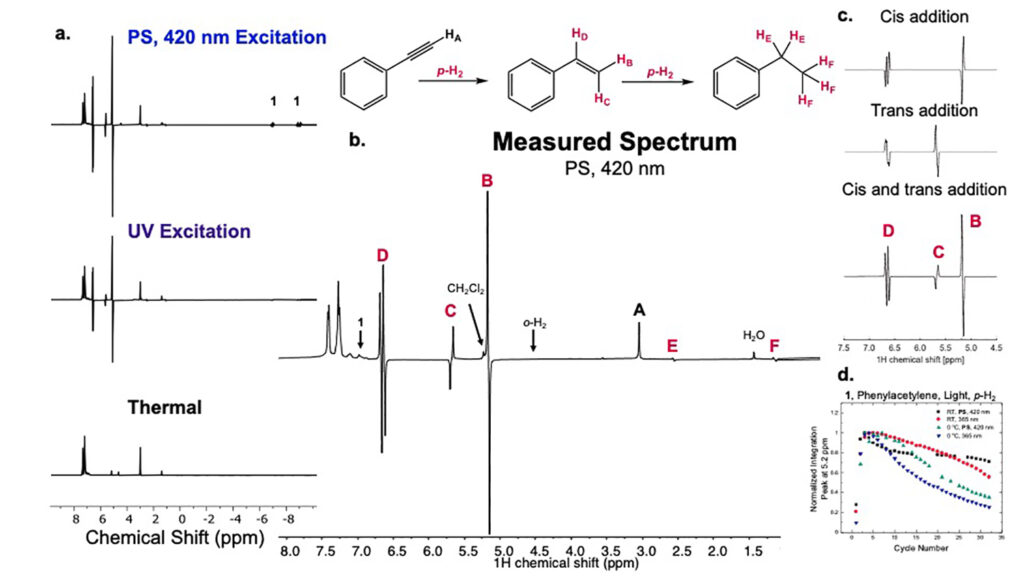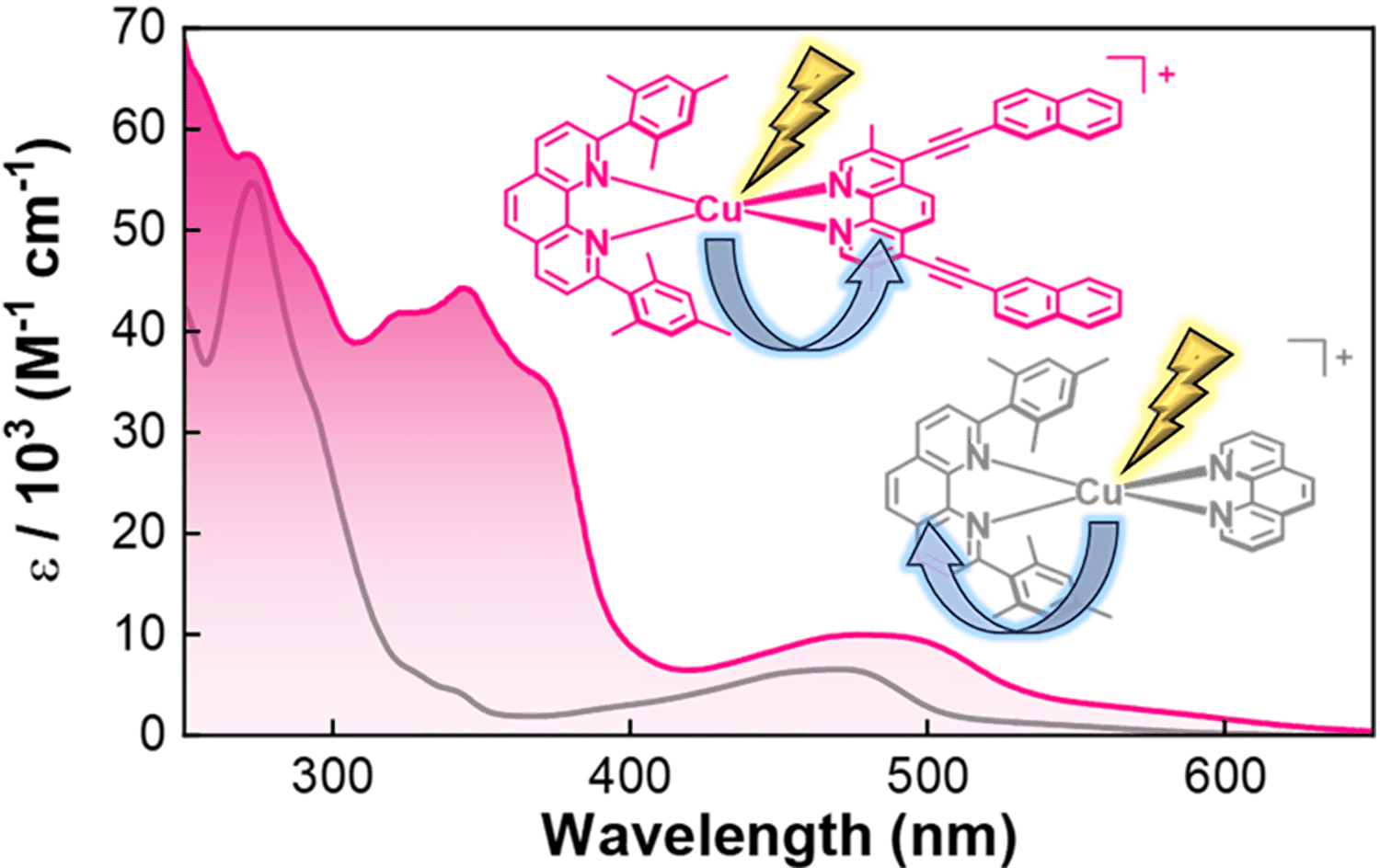NMR signals, Dramatically Boosted

Learn how NC State researchers demonstrated how NMR signals are dramatically boosted via simple visible light excitation.
Felix Castellano, Thomas Theis, and co-workers are deviating from the traditional approaches to overcome a significant weakness of Nuclear Magnetic Resonance (NMR) signals. As a scalable and fast method, they use hyperpolarization by simple visible light excitation to increase NMR sensitivity. A recent issue of ACS Central Science highlighted their research in an editorial titled “para-Hydrogen-Induced Polarization Enabled by Visible Light Activation.”

A current graduate student of Chemistry at NC State University, Emily Brown, is the first author of the paper of interest. “NMR spectroscopy is used in the chemistry field to determine the structure of molecules,” said Brown. “NMR also measures signals using the same principle as Magnetic Resonance Imaging (MRI). Therefore, enhancing NMR sensitivity by using visible light is the starting point to the potential development of applications that could impact the future of chemistry and medicine.”

The paper, “Triplet Photosensitized para-Hydrogen Induced Polarization,” appears in the November 23 issue of ACS Central Science. Castellano and Theis are the corresponding authors. Brown is the first author. Mandzhieva and TomHon are co-authors.
- Categories:


